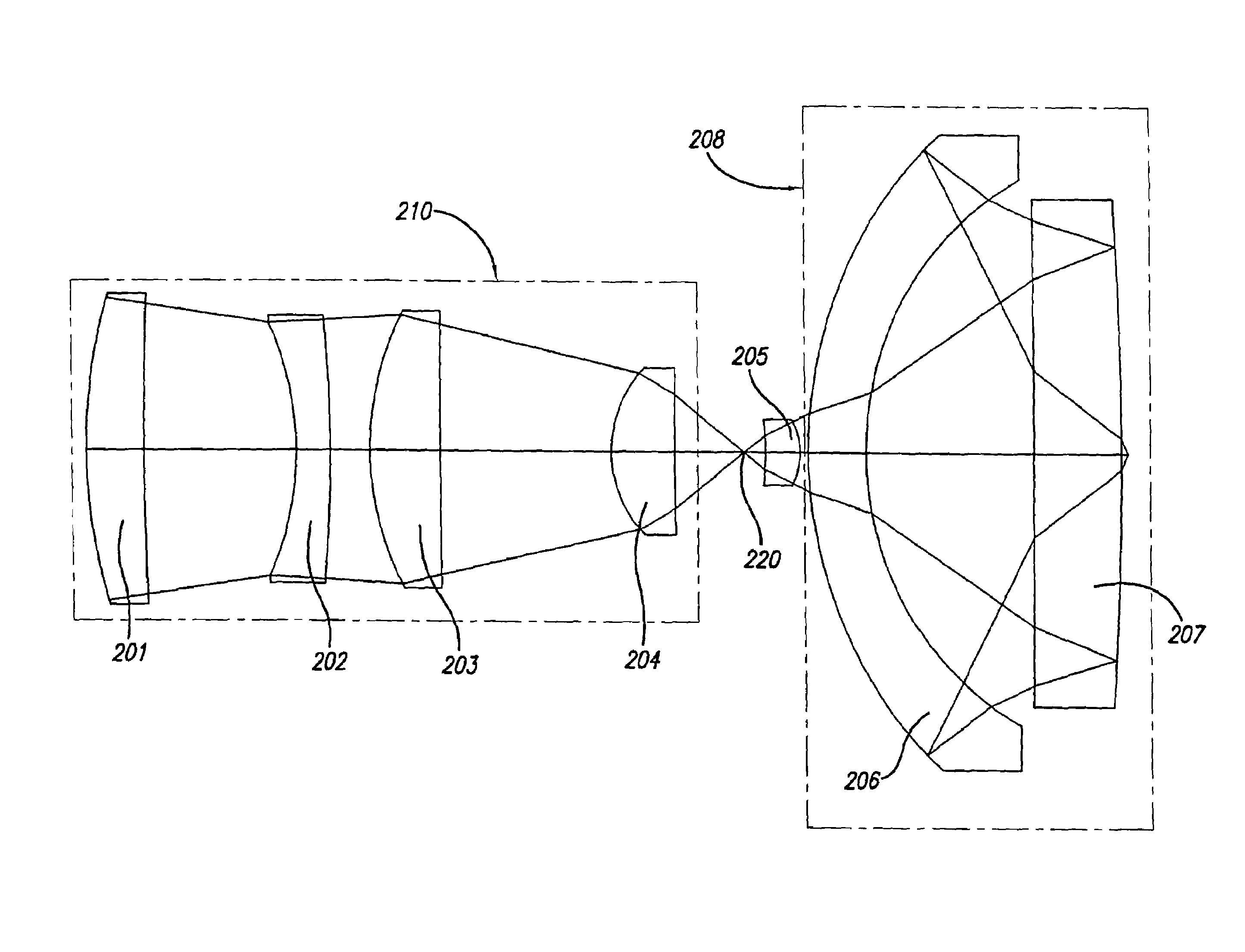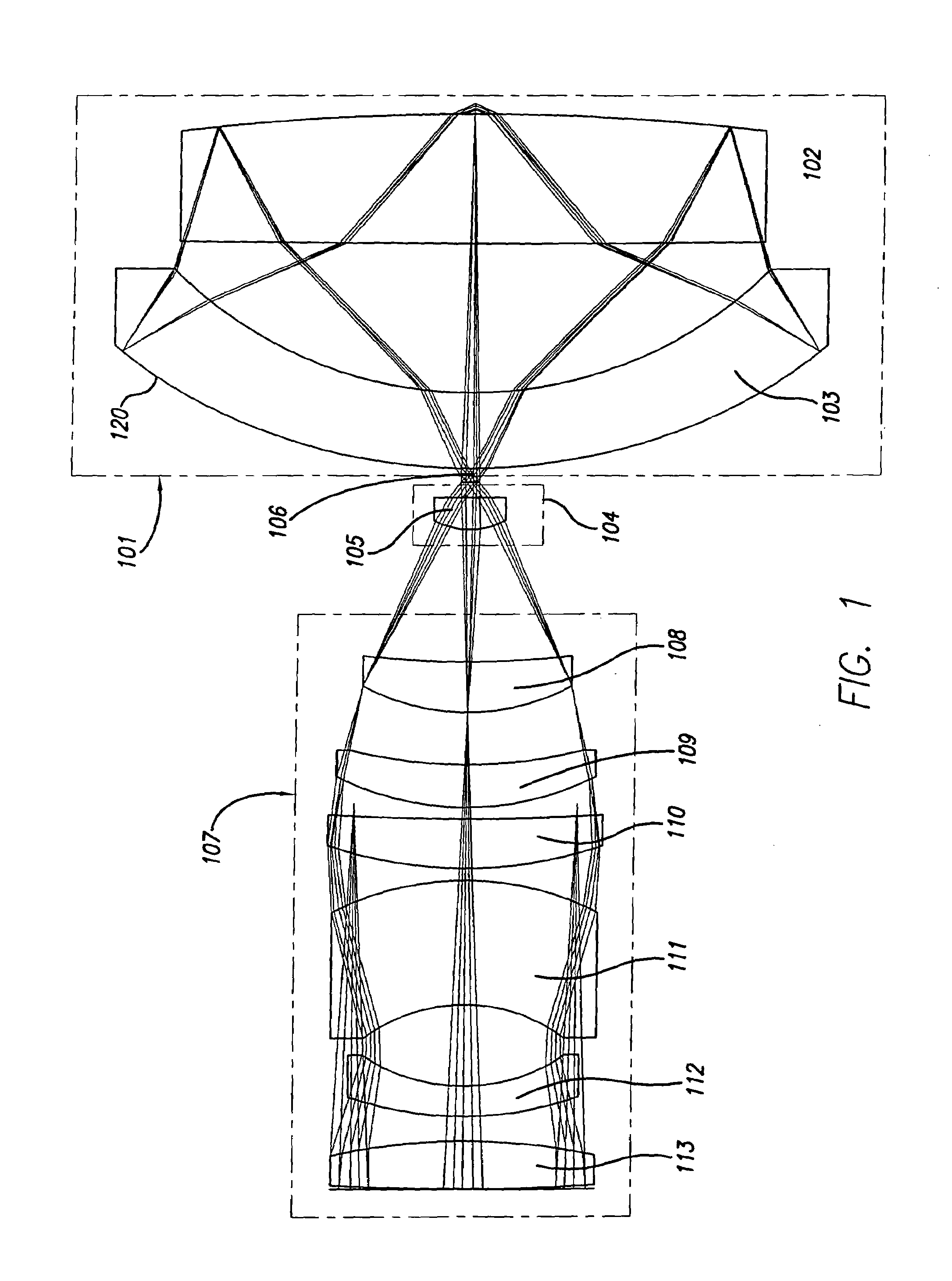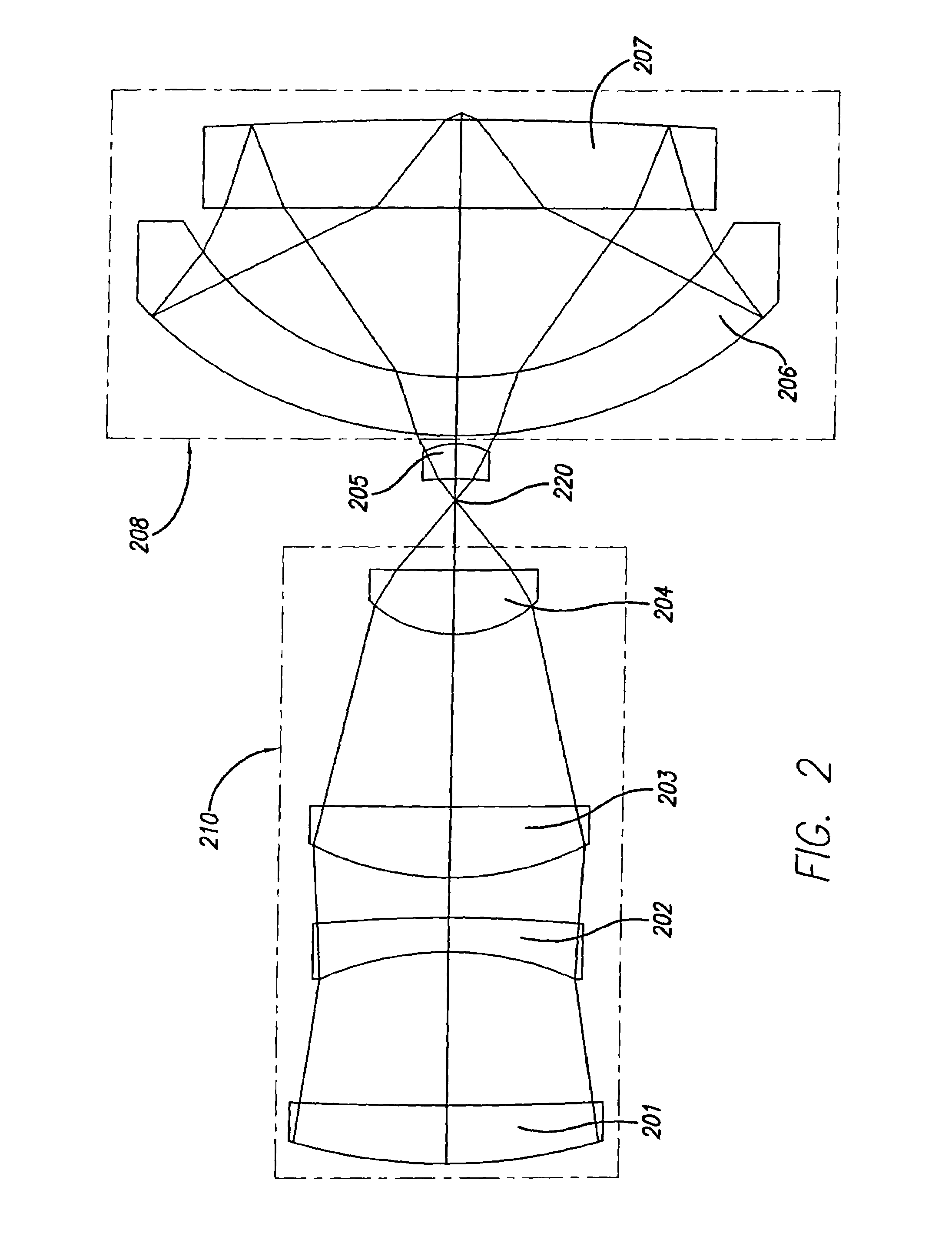Catadioptric imaging system exhibiting enhanced deep ultraviolet spectral bandwidth
a technology of deep ultraviolet spectral bandwidth and catadioptric optical system, which is applied in the field of optical imaging, can solve the problems of increasing the difficulty of chromatic correction in the duv region, and achieve the effect of high spectral bandwidth
- Summary
- Abstract
- Description
- Claims
- Application Information
AI Technical Summary
Benefits of technology
Problems solved by technology
Method used
Image
Examples
Embodiment Construction
[0018]According to the present invention, there is provided a catadioptric objective having improved spectral bandwidth in advanced applications, such as microscopy and semiconductor wafer inspection. In general, the design may comprise lenses formed from a single glass or using a single glass with a field lens or lenses and possibly a front or first lens constructed from another glass, where the field lens or lenses may generally be disposed toward a mangin mirror / lens or catadioptric group and away from an intermediate image point.
[0019]Established Designs
[0020]One previous objective design is shown in FIG. 1. The catadioptric objective as shown in FIG. 1 is optimized for broad-band imaging in the UV spectral region, namely approximately 0.285 to 0.320 micron wavelengths. The objective provides relatively high numerical apertures and large object fields. The design of FIG. 1 uses the Schupmann principle in combination with an Offner field lens to correct for axial color and first ...
PUM
| Property | Measurement | Unit |
|---|---|---|
| wavelengths | aaaaa | aaaaa |
| wavelengths | aaaaa | aaaaa |
| wavelengths | aaaaa | aaaaa |
Abstract
Description
Claims
Application Information
 Login to View More
Login to View More - R&D
- Intellectual Property
- Life Sciences
- Materials
- Tech Scout
- Unparalleled Data Quality
- Higher Quality Content
- 60% Fewer Hallucinations
Browse by: Latest US Patents, China's latest patents, Technical Efficacy Thesaurus, Application Domain, Technology Topic, Popular Technical Reports.
© 2025 PatSnap. All rights reserved.Legal|Privacy policy|Modern Slavery Act Transparency Statement|Sitemap|About US| Contact US: help@patsnap.com



